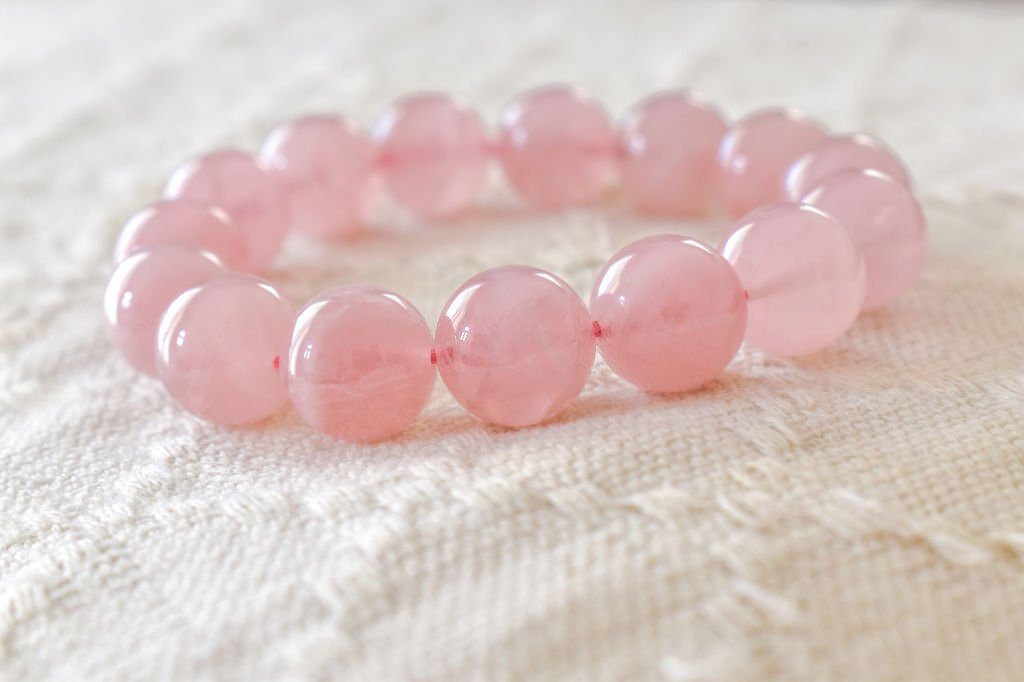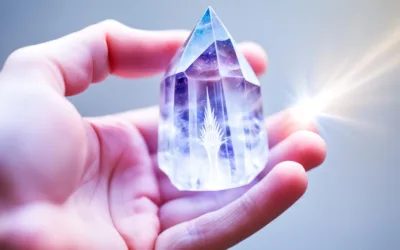
Citrine is a type of quartz that ranges in color from a pale yellow to a deep orange.
It is widely used in jewelry making and is also believed to have metaphysical properties that make it a popular choice for use in crystal healing.
Many people wonder if citrine can be placed in salt, as salt is often used for its purifying and protective properties.
History of Citrine
Citrine is a type of quartz that has a rich history dating back thousands of years.
It is prized for its yellow-to-orange color and has been used for jewelry making and other decorative purposes for centuries.
In this article, we will explore the history of citrine and how it has evolved over time.
The earliest known use of citrine dates back to ancient times, when it was used by the Greeks and Romans for jewelry making.
During this time, citrine was considered a symbol of wealth and was often used to adorn the clothing and accessories of the wealthy.
The yellow color of citrine was also associated with the sun and was believed to bring good luck and prosperity.
During the Middle Ages, citrine was popular for use in religious artifacts, such as rosaries and altar pieces.
It was also used to decorate religious manuscripts and was sometimes used as a substitute for gold. During the Renaissance, citrine became popular in jewelry making once again, and was often used to create intricate and ornate designs.
In the modern era, citrine has continued to be popular for jewelry making and is also used for its metaphysical properties.
Many people believe that citrine has the power to bring positivity, happiness, and abundance into one’s life, and it is often used in crystal healing for this reason.
Today, citrine is widely available and is often used in a variety of jewelry styles, from classic and elegant to modern and trendy.
Citrine has a rich history that spans thousands of years. From ancient times to the present day, it has been prized for its yellow-to-orange color and has been used for jewelry making and other decorative purposes.
Whether you are using citrine for its beauty or for its believed healing properties, it is clear that this gemstone has a long and fascinating history.

Property of citrine
Citrine is a type of quartz that is prized for its yellow-to-orange color, which ranges from a pale lemon yellow to a deep, rich amber.
It is often used in jewelry making and is also believed to have various properties that make it a popular choice for use in crystal healing.
Some of the properties of citrine include:
Healing Properties: Many people believe that citrine has the power to heal and balance the solar plexus chakra, which is associated with self-esteem and personal power. It is also believed to stimulate the body’s natural healing processes and promote overall health and well-being.
Abundance and Prosperity: Citrine is often referred to as the “Stone of Abundance” and is believed to attract prosperity, success, and abundance into one’s life.
It is thought to promote financial stability and is sometimes used in manifestation practices to help manifest desired outcomes.
Positive Energy: Citrine is believed to have a positive and uplifting energy that helps to dispel negativity and promote happiness and joy.
It is thought to encourage optimism, positivity, and a positive outlook on life.
Creativity and Inspiration: Citrine is said to stimulate creativity and inspiration and is often used by artists and writers to enhance their creativity and imagination.
Clarity and Focus: Citrine is believed to promote clarity of thought and enhance focus and concentration. It is sometimes used by students and professionals to improve their mental clarity and focus.
It is important to note that these properties are based on belief and personal experience and are not scientifically proven.
However, many people find that using citrine in their daily lives enhances their well-being and improves their overall outlook on life.
Whether you are using citrine for its beauty or for its believed properties, it is clear that this gemstone is a popular choice for many people.

How to reserve citrine properly
Citrine is a type of quartz that is prized for its yellow-to-orange color, and it is important to preserve its color and overall quality. Here are some tips for preserving citrine:
Cleaning: Clean your citrine regularly with a soft cloth or brush to remove any dirt or debris that may accumulate on the surface.
Avoid using harsh chemicals or abrasive cleaning materials, as they can scratch the surface of the citrine and damage its color.
Storage: Store your citrine in a cool, dry place away from direct sunlight and moisture.
Avoid storing citrine near other gemstones or materials that may scratch or damage it, and store it in a soft cloth or jewelry box to protect it from damage.
Handling: Handle your citrine gently and avoid exposing it to extreme heat or cold, as these conditions can damage the color and structure of the gemstone.
Also, avoid exposing citrine to sudden changes in temperature, as this can cause the gemstone to crack or break.
Avoid Exposure to Chemicals: Avoid exposing citrine to chemicals such as perfumes, hair sprays, and cleaning products, as these can damage the surface of the gemstone and affect its color.
Professional Cleaning: If your citrine becomes heavily soiled or discolored, consider having it professionally cleaned.
A professional jeweler can use safe and effective cleaning techniques to restore the gemstone to its original color and luster.
By following these simple tips, you can help to preserve the color and quality of your citrine and ensure that it remains a beautiful and vibrant gemstone for many years to come.

Can citrine go in salt?
The short answer is yes, citrine can go in salt. In fact, many people believe that placing citrine in salt can enhance its healing properties and cleanse its energy.
Some practitioners of crystal healing recommend placing citrine in a bowl of salt for 24 hours to purify its energy and remove any negative or stagnant energy.
It is important to note, however, that not all types of salt are suitable for use with citrine.
Sea salt and Himalayan pink salt are often recommended for use with citrine, as they are believed to have purifying and grounding properties. It is also important to avoid using table salt, as it may contain additives that can damage the citrine.
Citrine can be placed in salt to enhance its healing properties and cleanse its energy.
However, it is important to use the right type of salt and to avoid using table salt, which may contain additives that can damage the citrine.
Whether you are using citrine for its metaphysical properties or simply as a beautiful piece of jewelry, placing it in salt can help to keep its energy clear and vibrant.
How to wear citrine properly
Citrine is a beautiful and versatile gemstone that is often used in jewelry making, and there are many ways to wear it to showcase its unique color and beauty. Here are some tips for how to wear citrine properly:
As a Statement Piece: Citrine can make a bold and vibrant statement when worn as a large piece of jewelry, such as a pendant necklace or a cocktail ring.
This is a great option if you want to make a statement with your jewelry and draw attention to your citrine.
Mixed with Other Gemstones: Citrine can also be paired with other gemstones, such as diamonds or other precious stones, to create a more nuanced and sophisticated look.
This is a great option if you want to wear citrine as part of a layered look or as a complement to other jewelry items.
Everyday Wear: Citrine can also be worn as an everyday piece of jewelry, such as stud earrings or a simple pendant necklace.
This is a great option if you want to wear citrine on a daily basis and enjoy its beauty and energy throughout the day.
Layered with Other Jewelry: Layering citrine with other jewelry items, such as bracelets and necklaces, is a great way to create a more eclectic and bohemian look.
This is a great option if you want to mix and match different jewelry items to create a unique and personalized look.
With Casual Attire: Citrine can also be worn with casual attire, such as jeans and a t-shirt, to create a more relaxed and laid-back look.
This is a great option if you want to wear citrine in a more casual setting and enjoy its beauty and energy in a relaxed environment.
When wearing citrine, it’s important to consider the occasion, your personal style, and the other jewelry items you are wearing.
By considering these factors, you can find the perfect way to wear citrine and showcase its unique beauty and energy.

Citrine’s origin
Citrine is a type of quartz that is prized for its yellow-to-orange color, and it has a rich and fascinating history that dates back thousands of years.
The origins of citrine are believed to be in several different regions of the world, including:
Brazil: Brazil is one of the largest producers of citrine, and the country has a rich history of citrine mining that dates back to the 17th century.
Brazilian citrine is known for its rich and vibrant colors, and it is still a popular source for citrine today.
Madagascar: Madagascar is another major source of citrine, and the country is known for its high-quality gemstones and mineral deposits.
Madagascar is particularly famous for its orange and yellow citrines, which are known for their intense color and clarity.
Spain: Spain is also believed to be one of the original sources of citrine, and the country has a rich history of gemstone mining and jewelry making.
Spanish citrine is known for its pale yellow color and is often used in traditional jewelry designs.
Africa: Africa is also believed to be one of the original sources of citrine, and the continent is home to several important citrine mines, including those in Madagascar and South Africa.
African citrine is known for its rich and intense color, and it is highly prized by gem collectors and jewelry makers.
Russia: Russia is also believed to be a source of citrine, and the country is known for its high-quality gemstones and mineral deposits.
Russian citrine is known for its pale yellow color and is often used in traditional jewelry designs.
The origins of citrine are believed to be in several different regions of the world, including Brazil, Madagascar, Spain, Africa, and Russia.
Regardless of its origin, citrine is prized for its yellow-to-orange color and its beauty, and it continues to be a popular and highly sought-after gemstone.




